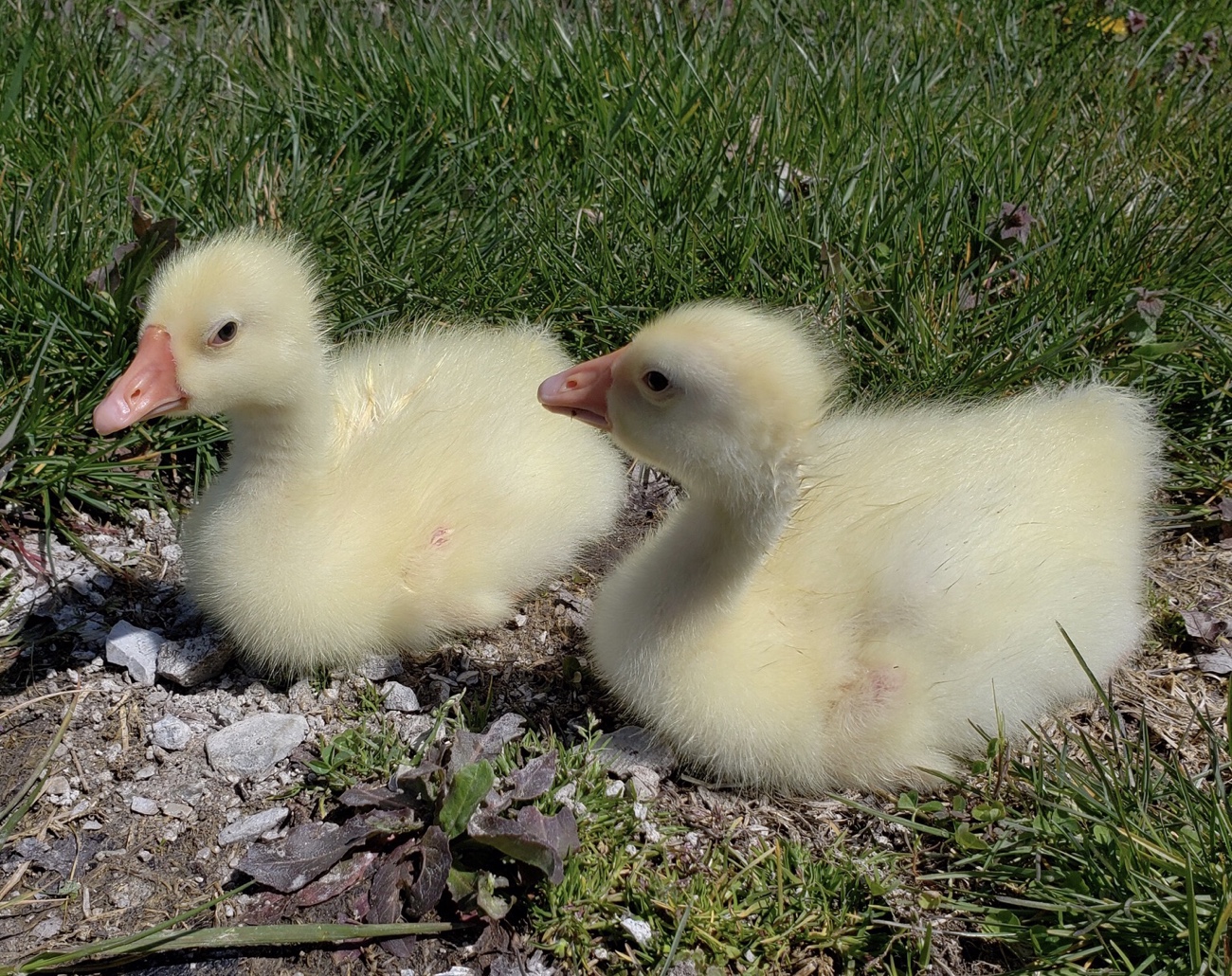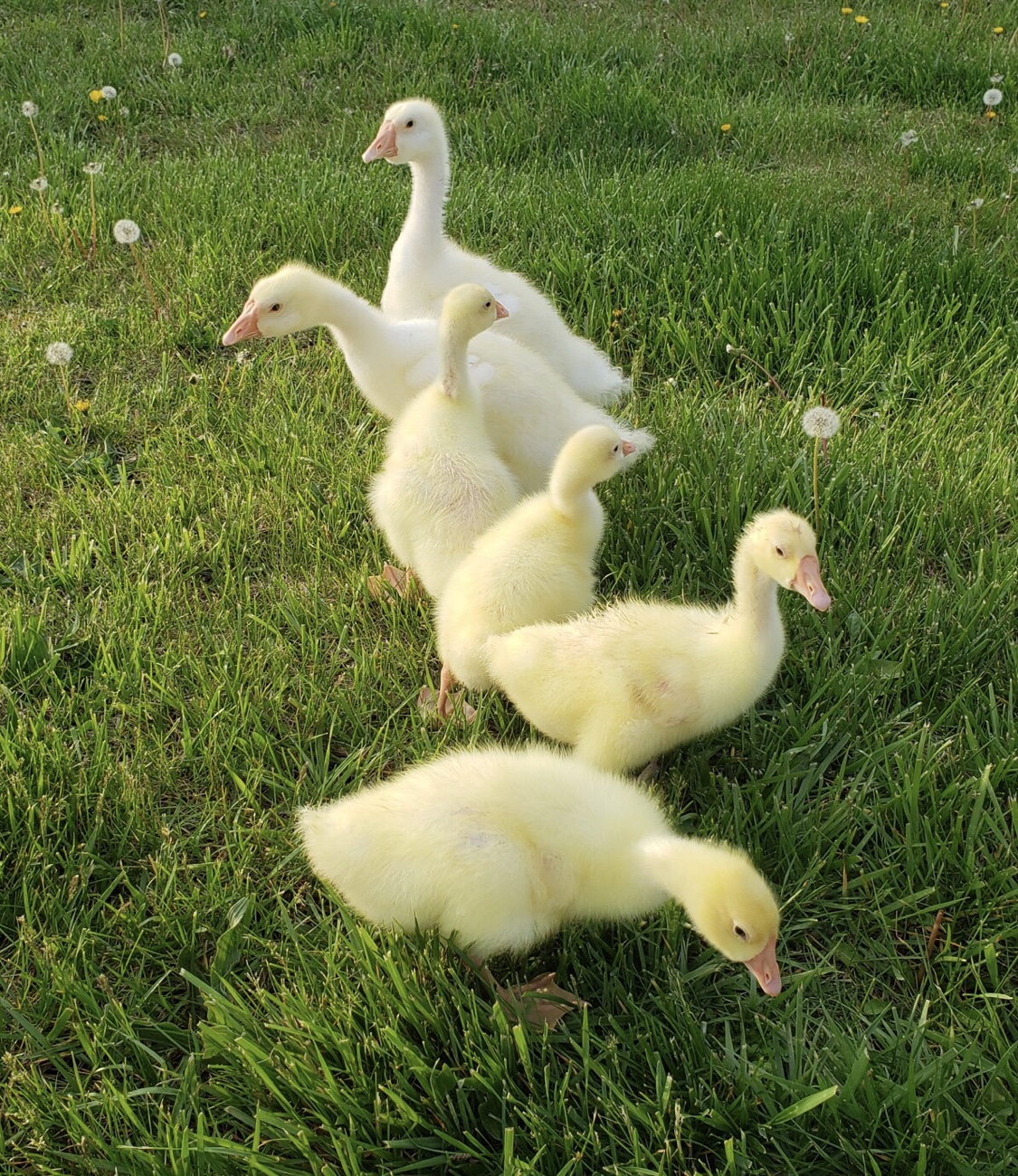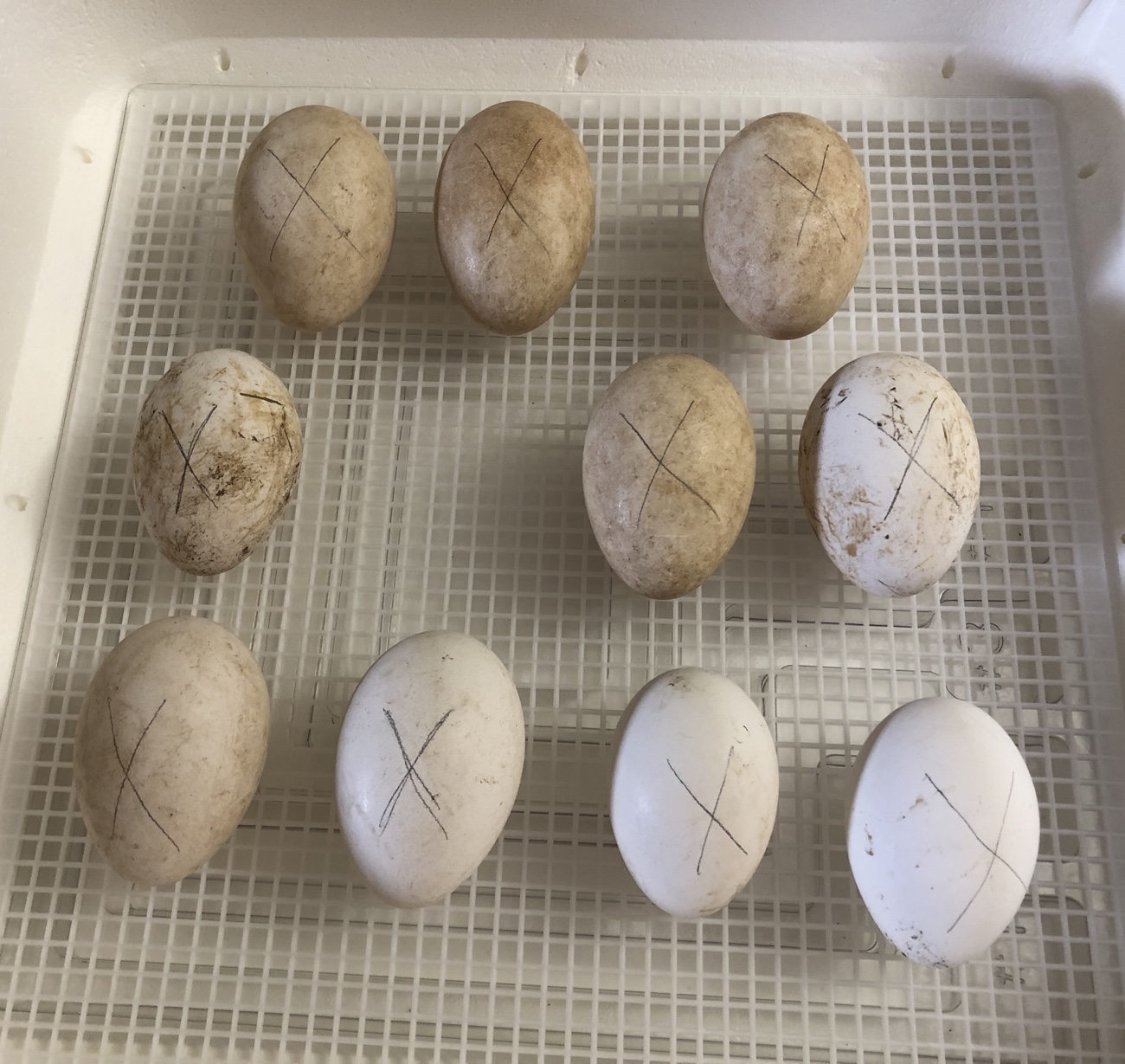
The hatching season is off to a strong start here on the farm, as we rebuild our poultry and waterfowl flocks. We’ve incubated many types of eggs (chicken, duck, guinea fowl, goose), but goose eggs are among my favorites!
Last year, we incubated eggs from our white Chinese geese. It was the goose’s first year laying, but we managed to hatch six beautiful goslings. The goslings were very friendly to us, but took pleasure in frequently harassing the other birds, especially our visually-impaired Muscovy drake. Ultimately, the adults were rehomed (an extra gander went to a flock of his own, the remaining pair went together) and the goslings went to a home with a lake. We miss those babies most of all.

Since then, we’ve researched other goose breeds in the hope of finding some that could co-exist more peacefully with the other farm denizens. Seeing a Pilgrim pair at a new friend’s farm prompted me to learn more about the breed – and helped me decide to try hatching some.
Pilgrim geese are a heritage breed, generally noted to be reasonably docile, medium-sized geese. As with most goose breeds, they can be good “watchdogs”, alerting to the presence of a stranger or something unusual in their domain, and they’re good foragers. As an added bonus, though, they’re auto-sexing (sexually dimorphic), meaning they can be sexed using physical characteristics as both goslings and adults. There are only two (American) goose breeds where this is the case: Pilgrim and Cotton Patch.
Why is this important? From a planning perspective, it allows us to rehome “extra” ganders much more quickly (if needed). We’ll also know how many future layers we’ll have. It is, quite frankly, a wonderfully helpful attribute of the breed.
Incubation of goose eggs is a bit different from incubating other types of eggs, and they benefit from some special handling. I use this comprehensive BackYard Chickens thread as my guide, and had success with it last year. Because goose eggs are so large, I prefer to hand turn them an odd number of times a day and, while arguments have been made that it’s not necessary, I also cool and mist the eggs (beginning in week 2). Having seen broody Muscovy ducks return, damp from a bath, to their incubating eggs is – to me – pretty compelling support for cooling and misting waterfowl eggs – moms know!
Are you wincing at the thought of placing muddy eggs into the incubator? While it would be ideal to set only clean eggs, waterfowl eggs tend to get muddy and, sometimes, poopy. Goose eggs have a protective film called the “bloom” that serves as a barrier to prevent bacteria from entering the egg, so I don’t mess with it – and I’ve had “dirty” eggs hatch just like clean ones in my incubators.

These eggs should hatch in approximately 30 days (give or take a couple of days – our Chinese geese also took about 30 days on average). I keep the humidity on the low side until lockdown, then will boost it for hatching. With luck, there will be goslings on the farm once again this year!
Next update will be the first candling – stay tuned!

Comments are closed.